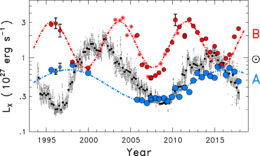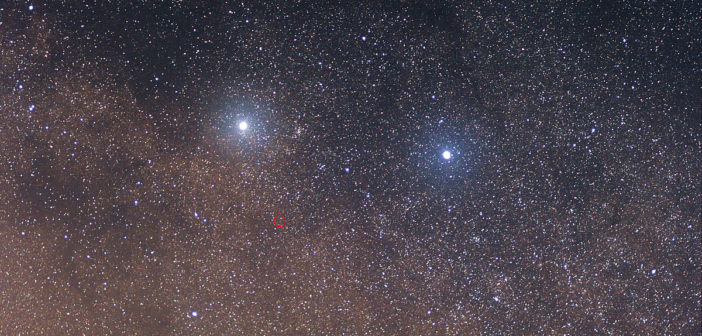Editor’s note: In these last two weeks of 2018, we’ll be looking at a few selections that we haven’t yet discussed on AAS Nova from among the most-downloaded papers published in AAS journals this year. The usual posting schedule will resume in January.
Alpha Centauri Beyond the Crossroads
Published January 2018
Main takeaway:
A scientist from University of Colorado Boulder, Tom Ayres, has compiled observations from the Chandra X-ray Observatory tracking the X-ray emission from the two stars of the Alpha Centauri binary system. Alpha Centauri is the closest star system to us, at just 4.37 light-years away.
Why it’s interesting:
Alpha Centauri A and B are both Sun-like dwarf stars with coronae very similar to our Sun’s. By studying the X-ray activity of these stars, we can learn more about how stars like the Sun bombard their environments with harsh radiation. This is useful both from the perspective of protecting our own interests — since this so-called space weather can affect astronauts, satellites, our power grid, etc. — and from the perspective of learning about potential habitability around our nearby stellar neighbors.
On Alpha Centauri’s recent crossroads:

X-ray light curves of Alpha Centauri A (blue), Alpha Centauri B (red), and the Sun (gray) for 1995–2018. [Ayres 2018]
Citation
T. R. Ayres 2018 Res. Notes AAS 2 17. doi:10.3847/2515-5172/aaa88f

1 Comment
Pingback: Selections from 2018: X-Rays from Alpha Centauri – New